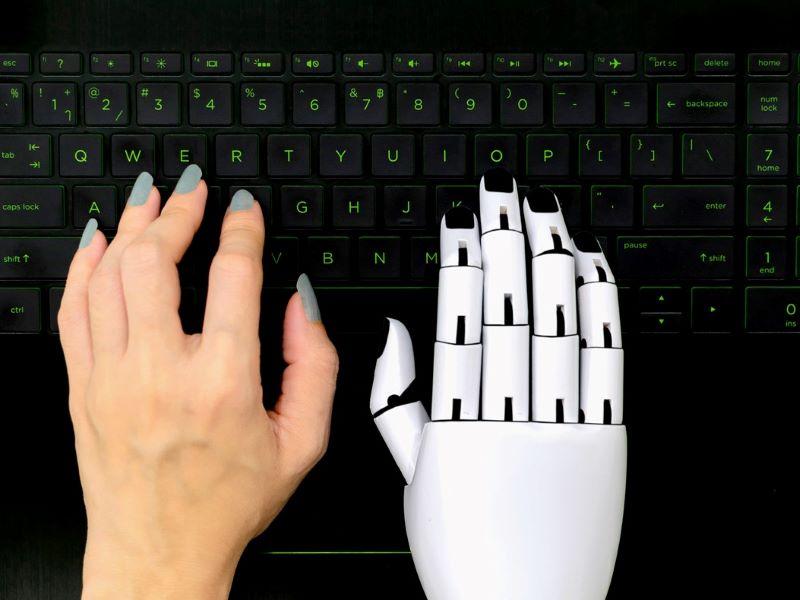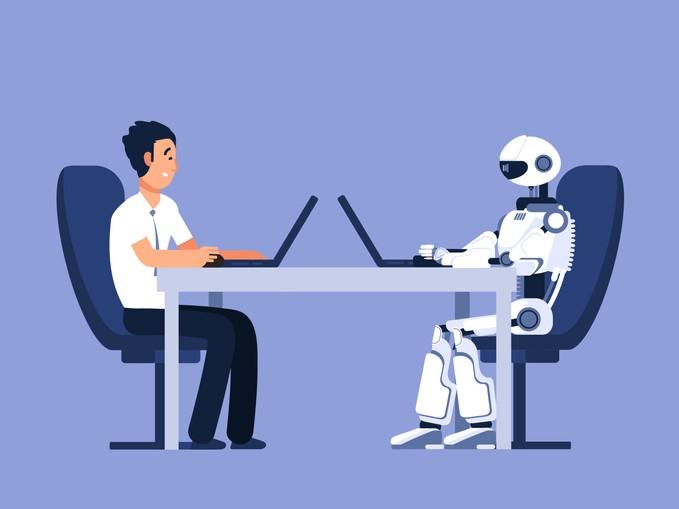On 30 November 2022, a simple AI-powered dialogue box capable of outputting cohesive ideas on any topic imaginable was released to the public. Since then, ChatGPT’s potential misuse by students has dominated the conversation around this technology, but what about teachers? Can we leverage the design intent behind artificial intelligence and use it to come up with novel solutions to problems in education?
- Collection: AI transformers like ChatGPT are here, so what next?
- Eight ways to engage with AI writers in higher education
- What AI-generated lesson plans might mean for educators
Let’s consider the future of AI-powered education. Here are seven ways that it could improve your productivity as a teacher.
1. Comprehensive coverage of available information
The fields we teach are always expanding and doing exhaustive curriculum reviews takes time and resources. Instead, we can ask AI to curate all the available information relevant to our field and reframe this as learning objectives appropriate for the level of our class. The conversational language model used by AI is very effective at pitching concepts for the right target audience, but you still need a knowledgeable teacher to know how to break each topic down for students.
2. Connecting the dots
Some topics are naturally more engaging than others, so asking AI to distil the most compelling examples, studies or anecdotes in your field is an interesting exercise. In many ways this perfectly aligns with AI’s design intent: to present disparate sources of information from its training dataset in a way that connects with as many humans as possible. That is our mission as teachers and effective communicators as well.
3. A thousand words or one graphic?
Diagrams from textbooks are the default visual cues teachers rely upon, but it is a lot of work updating these figures with each new edition. You can use AI to create custom graphics reusable across multiple semesters in response to specific prompts and combinations of keywords. The one caveat is that much of this “original artwork” closely resembles existing artwork made by uncredited artists, so the ethics underlying this remain ambiguous for the moment.
4. Automate your forward planning
Teachers’ working days are filled with hundreds of tiny repetitive tasks: organise timetables, set assignment due dates, email students with assessment feedback. All these planning tasks can be automated using APIs and basic scripting, but you need basic coding experience. AI to the rescue – just ask it to write a script and the heavy lifting will be done for you. By filling in the essentials yourself – file names, local directories – you can automate away the busy work in teaching to better focus on the big picture.
5. Are you smarter than a 10-year-old?
Explaining a concept so that a fifth grader (that’s a child in year 6 in the UK) can understand it is a common way to reconsider how we teach. Try asking AI to “explain X [insert subject] so that a fifth grader can understand it”. How different is this from your explanation of the topic in your first class? What about the explanation in your last class of the semester? Being able to relate to different audiences is the foundation for all good communication, and AI has been optimised to do this effectively.
6. Can you beat the algorithm?
Release an assessment item with guidelines, criteria sheets and marking rubrics as per usual, but with a catch: the full AI-generated response to the task is released at the same time. How can students improve upon AI’s attempt? The AI version will be fine spelling and grammar wise, and will likely convey a basic level of understanding. Demonstrating deep cognition is not a simple task, and students will need to present a range of qualitative and quantitative evidence, use narrative tools of persuasion, and leverage the work of experts in the field to support their argument. We all need to learn new and creative ways to beat the algorithm.
7. Breadcrumb trail to correct citations
AI-generated responses do not acknowledge the source of its information by default, and the black box this creates is antithetical to academic writing. This presents a fantastic learning opportunity on the value of peer-reviewed sources, as students new to writing are also inconsistent at best with citations and referencing. Show students an AI-generated response to a complex topic and ask them to annotate the missing attributions. There is a “mystery box” challenge to this: exactly where is this information coming from? How much can we trust it?
How teachers adapt to AI will keep changing
How should education adapt in a marketplace where the value of disciplinary expertise can be approximated so convincingly by an algorithm? Hopefully, this becomes more transparent in due course, but for the time being teachers can leverage the mystery as part of the incentive for our students’ continued learning. The onus is on all of us to learn how to use the technology rather than be used by it.
Jack Wang is an associate professor in the School of Chemistry and Molecular Biosciences at the University of Queensland. He was awarded 2020 Australian University Teacher of the Year.
If you found this interesting and want advice and insight from academics and university staff delivered direct to your inbox each week, sign up for the THE Campus newsletter.




comment